Last month, I expressed strong suspicions that the published host plant of the Autumn Cluster Moth, Dichomeris capnites, was incorrect and that I instead suspected that this moth was responsible for the annual decimation of the local shrub Mallotus claoxyloides instead. As mentioned last post, I collected a few of the larvae swarming our denuded M. claoxyloides and attempted to rear them in a container to confirm the identity of the moths they would become. It wasn’t too long before they had formed little reddish chrysalises within the silken webbing that bound eaten leaves.
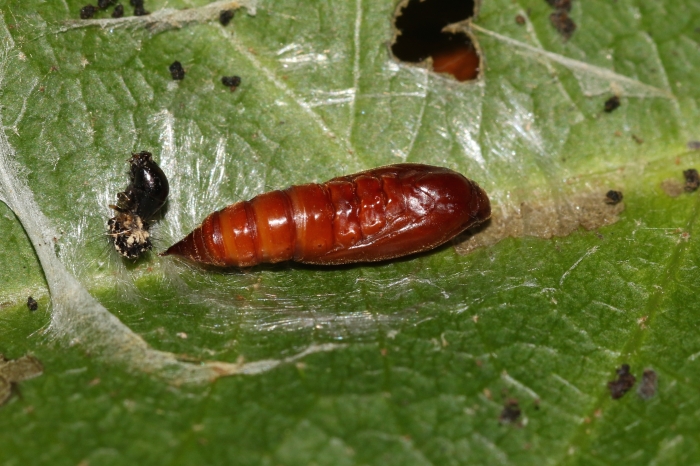
Soon enough, my suspicions were confirmed when what appeared to be Autumn Cluster Moths emerged a week or so later.
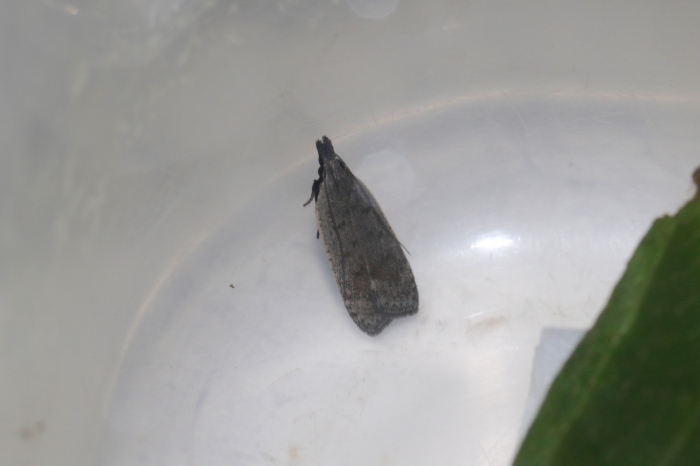
I have sent specimens of the emerged moths to the Queensland Museum for confirmation, although with the world currently gripped by the Covid-19 crisis, I am not expecting a fast reply. The moths that were emerging and congregating beneath M. claoxyloides last month have now all moved into the shady forest nearby and have gathered in their iconic clusters on broad, low-hanging leaves.

If past years are anything to go by, they will remain like this for the coming months. At Pine Mountain, Mallotus claoxyloides is the primary host plant for the species. However, this year many Alchornea ilicifolia were also defoliated by the same larvae (with the moths gathering beneath denuded plants soon afterwards). I also have a few plants of an undescribed Acalypha sp. from Bulburin National Park growing by our house. In the four years these plants have been in the ground, this is the first time they have been denuded by Autumn Cluster Moths. Interesting, the locally native Acalypha capillipes, which has much smaller leaves than the undescribed species, is not eaten by the moth. All of the host plants I have observed are in the family Euphorbiaceae, quite unlike the supposed host plant Acronychia.
With the Covid-19 pandemic in full swing I, like most people, have been spending a lot of time at home. While most of this time is spent working in front of the computer, at least I get a chance to go on lunchtime strolls. Last week, I noticed butterflies congregating at the back of one of my planted areas, and I went in to investigate. Both of my Micromelum minutum were in full flower and I have never seen such densities of butterflies swarming over the blossoms.

Even though this plant species has flowered and fruited regularly on my property over the past couple of years (I only planted them four years ago), I hadn’t noticed what a fantastic butterfly attractant they were until now, probably because my only bushes are tucked away behind other plants. Over the weekend, I recorded 26 species of butterflies feeding on the flowers of these two bushes and I’m sure that someone with better butterly-identification skills than me could have found several more. It’s a fantastic plant for small gardens as it is drought-tolerant, grows into a rounded shrub about 4 m tall, and flowers multiple times a year. It also produces red fruits, which I suspect are bird-attracting, but my bushes are still a bit too small to support the weight of figbirds and fruit-doves, so I am yet to see any birds eating them. Here is a collection of some of the butterflies I photographed at the M. minutum on the weekend.

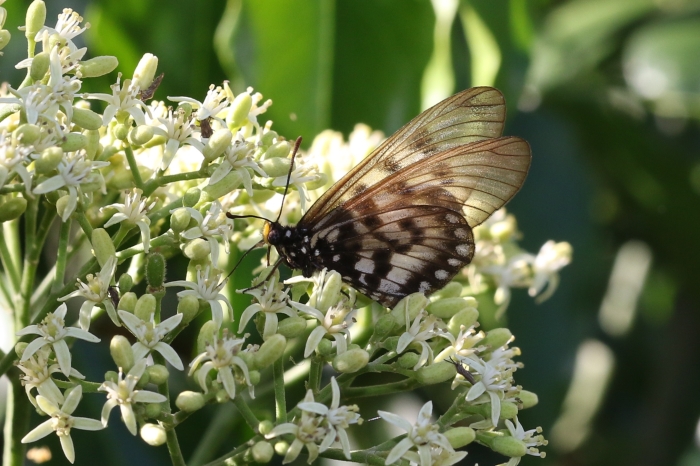
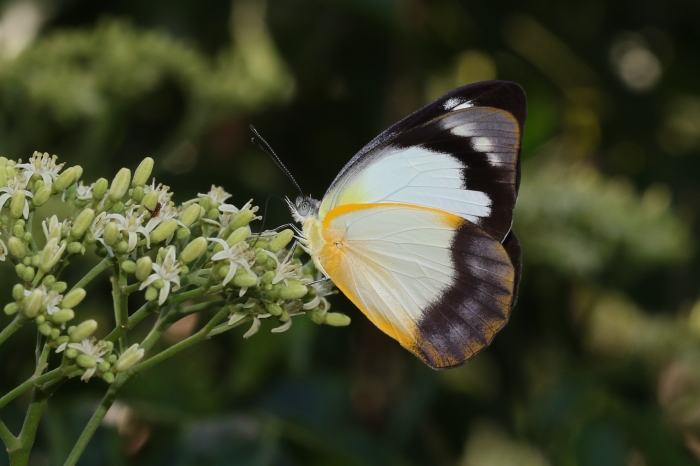


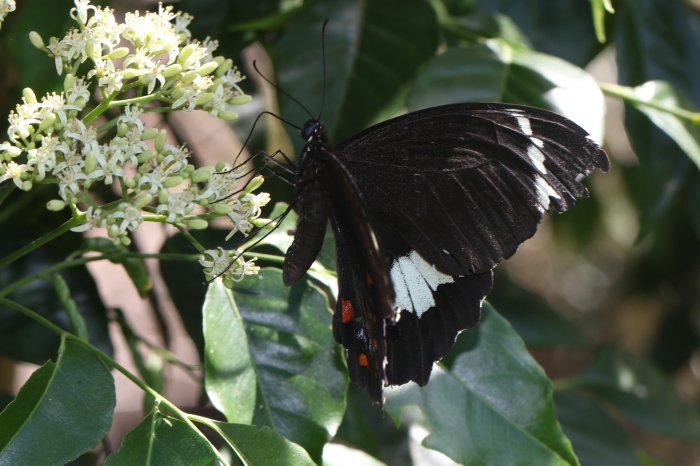

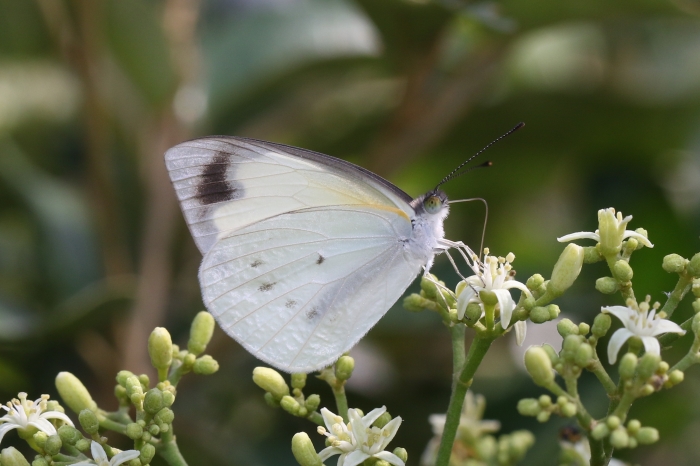
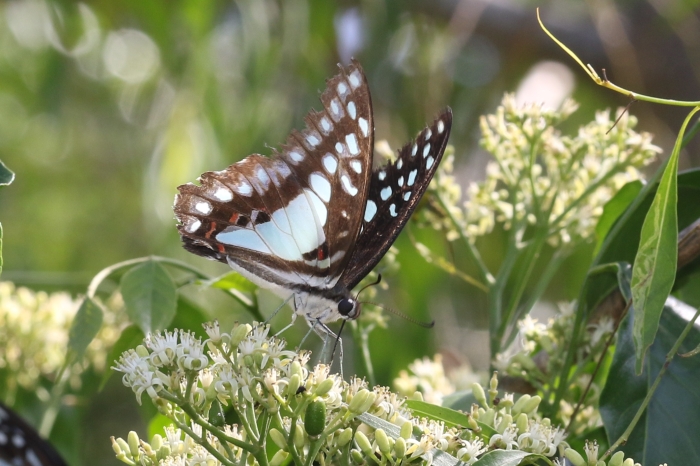

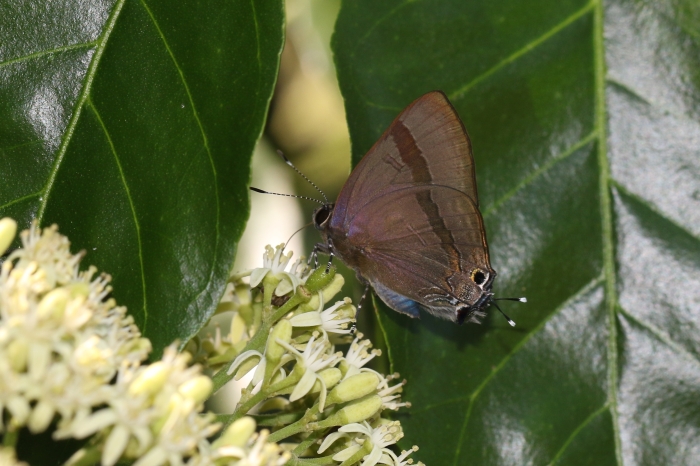
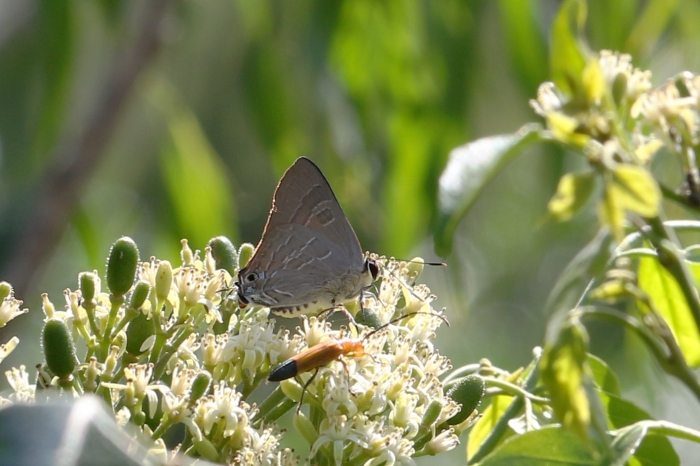
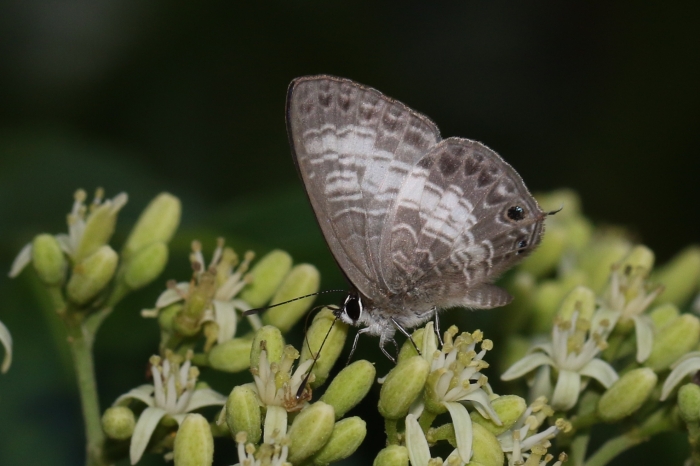
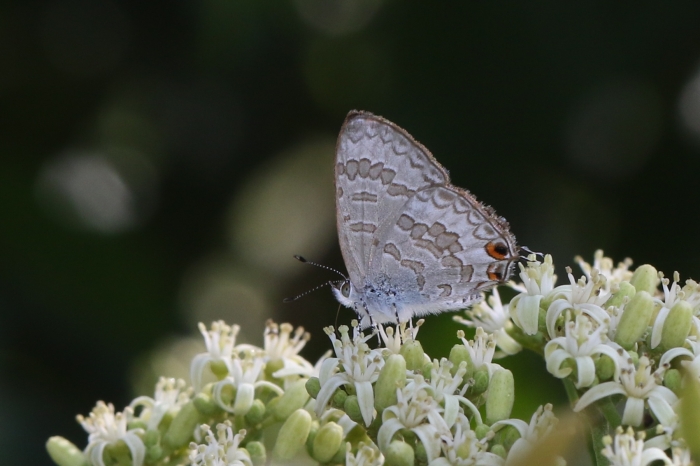



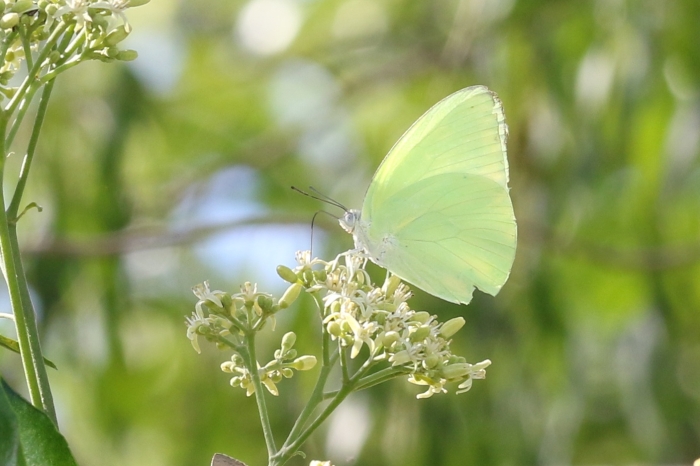

A couple of years ago, I mentioned on this blog that the local plant Sida hackettiana attracts numerous small butterflies. Well, it turns out that several S. hackettiana were growing and flowering right next to the Micromelum. There was no contest regarding the preferred nectar source: the Micromelum. The Sida had a few small blues and yellows feeding on them, but even these species were more numerous on the Micromelum flowers.
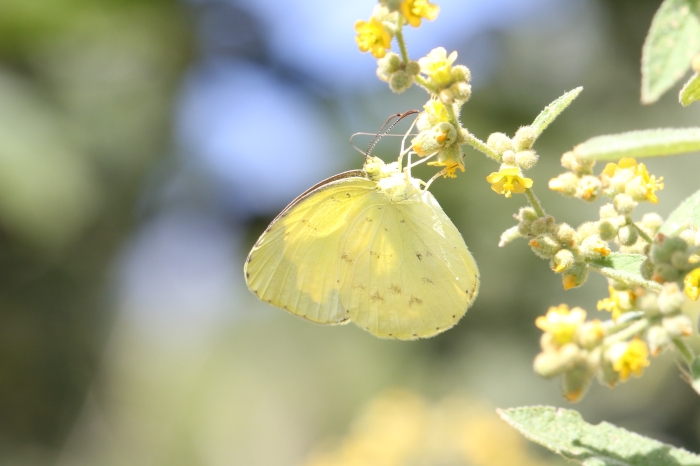
It’s so rewarding when plants I have planted begin to support wildlife, and it’s not just the butterflies that have moved into my planted areas. While photographing butterflies, I noticed a Lewin’s Honeyeater feeding nestings in a nearby bush. I didn’t want to disturb them, so didn’t take a photo. This nest of Double-barred Finches, however, was in a much more open spot for a photograph.

Finches love to build nests in young Hoop Pines, as their prickly foliage provides good protection. I planted this ex-Christmas tree only last year, when it had out-grown a friend’s living room. The finches have built their nest almost entirely out of dead pieces of climbing asparagus (Asparagus africanus), so not only do they have me to thank for their building site, but also for the construction materials—large quantities of recently killed asparagus fills many of the nearby trees. I expect the chicks to hatch any day now, as the parents have been incubating for close to two weeks. I’ve intentionally avoided weeding or planting nearby over the past couple of weeks to avoid disturbing them.
Our Australasian Grebes have successfully hatched four chicks over the past week. The youngsters ride around on their parents’ backs (two can fit on each parent), or diligently follow behind when the parents are busy diving for food.
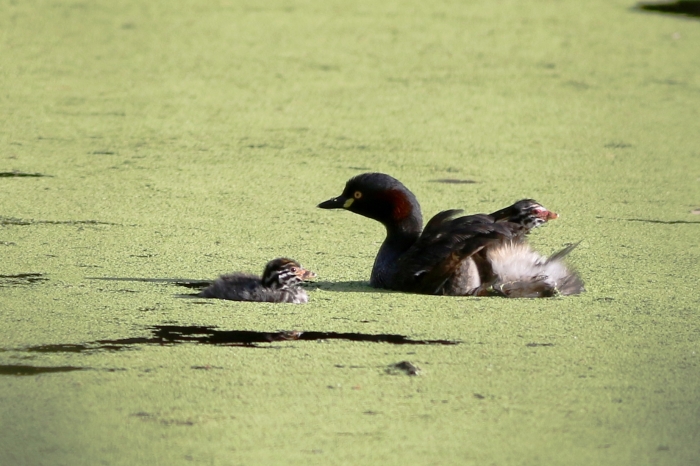
Plenty of frogs have also started to metamorphose and disperse from the dam. Four very small Green Tree Frogs (Litoria caerulea) have sensibly found their way into my nursery, where they get a misting of water each day.

It’s funny how the autumn this year feels so much like spring, given how everything has sprung to life after the late summer rains.
Thank you for sharing, fantastic photos, love following your blog and sharing it with other Land for Wildlife members on the Brisbane side of the river.
LikeLike
Cheers, Amanda. Much of the wildlife around Pine Mountain should indeed be very similar to the Mount Crosby-Kholo-Moggill region.
LikeLike
Great work on the moth! Probably worth a little note to Australian Entomologist 🙂
Oh and I found a baby Bandy-bandy up Glorious the other night – such a cool little animal!!!
Elliot
LikeLike
I was wondering whether it was worthwhile publishing. I’ll wait to hear back from the museum. Congrats on the bandy-bandy! Very cool indeed.
LikeLike